The best air purifier for viruses and bacteria?
Our E-Carbon Fabric filters allow you to turn your air conditioner into a very effective air purifier. No need to invest in expensive air purifiers – our ECF filters can be cut-to-fit and installed in any air conditioner, standard air purifier, air circulating unit or intake / extractor fan etc. It really couldn’t be more cost effective. But ‘best’ isn’t all about low cost; how effective the air purification is matters too, right?… especially now, with Covid-19 and similar airborne viruses. So before making your decision on whether our product is the best air purifier for viruses and bacteria, read on and then decide for yourselves…
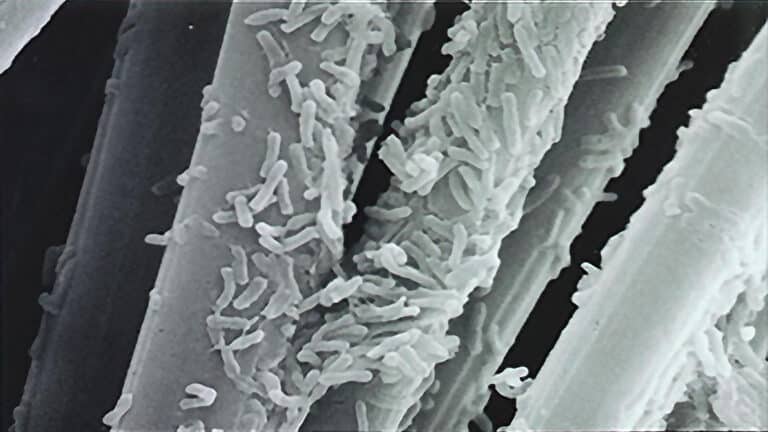

ECF filters out viruses, bacteria and harmful airborne particulate.
Our E-Carbon Fabric (ECF) can filter out particles as small as 0.01 microns (that’s 10nm / 10 nanometers), and are very effective at removing airborne viruses, bacteria and other particulates & pollutants, so can therefore purify air that is recycled through them via air conditioners, standard air purifiers or other air circulating appliances.
In comparison, the SARS-CoV-2 virus (the Coronavirus that causes Covid-19) ranges from 0.06 to 0.14 microns in size, though it’s generally considered to be 0.125 microns. Other known viruses range from 0.02 to 0.5 microns and 95% of airborne particulates are larger than 0.3 microns. Bacteria are much bigger than viruses, mostly ranging from 0.2 to 2 microns and even up to 10 microns (that’s diameter, not length). Because they are so much smaller than bacteria, viruses are usually measured in nanometers (nm), but here we’ve indicated microns in all cases, as it’s easier to compare ‘apples to apples’.
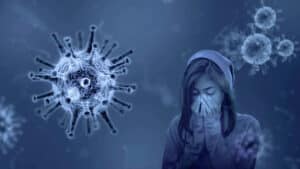
How viruses work and make us sick.
Many scientists don’t consider viruses to be ‘alive’ because they don’t meet some of the established criteria. For example, they don’t breed, instead viruses ‘replicate’ by invading cells and using the cell’s own mechanism and raw materials to create virus copies. This disrupts a cell’s normal function and lifecycle, breaking down and damaging a cell’s structure… and this is what makes us sick!
For viruses to invade cells, they must first attach to a cell’s receptors. They do this by using proteins on the surface of their structure (the spikes we often see depicted on virus images), which stick to receptor molecules on a cell’s membrane; but there’s a little more to it than that…
A virus is made up of a complex arrangement (pattern) of nucleic acids, proteins, fats and water molecules, which can be broken down to even smaller components (such as amino acids), which in turn have their own complex arrangements. For a virus to penetrate a cell, it’s protein arrangement (the ‘spikes’) must ‘pattern-match’ the cell’s receptors. If there is any damage to a virus’s complex arrangement of proteins, nucleic acids or the membrane, it can’t get in to a cell. Think of it like a virus needing a very long combination to a very complex lock; if the ‘combination-key’ doesn’t fit the ‘lock’ then the virus can’t get in!
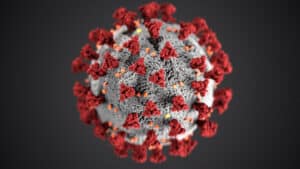
How to ‘deactivate’ viruses.
Because viruses can exist outside a host for quite some time and may also be ‘hard to kill’ (as they often aren’t considered to be ‘alive’ in the first place), it may be better to look at what ‘deactivates’ a virus (stops a virus from being contagious and unable to replicate), rather than what ‘kills’ it.
For a virus to be deactivated, something must ‘act on’ or ‘interact with’ the virus’s structure to rearrange (damage) it; in effect, changing the ‘combination’ that might otherwise let it into a cell. For example:
- Heat can deactivate a virus due to increased molecular motion.
- There can also be changes in a virus’s structure (deactivation) due to the disruption of chemical bonds; when the virus comes into contact with something else (that’s not a host). Although, when it comes to ‘acting on’ a virus’s structure, ‘hard’ surfaces tend to be less effective than ‘soft’ materials (like cloth).
- Even time can cause a virus to be deactivated; as the virus’s water molecules evaporate, or if oxygen interacts with the fatty membrane that surrounds some viruses, its’ structure will be compromised. So, a filter that was capable of capturing and holding on to a virus (even if the filter did nothing else) would eventually lead to the virus being deactivated. However, our filters do much more than that!
When a virus comes into contact with our E-Carbon Fabric filters, the virus is almost instantly deactivated due to the effect of both hydrophobic and hydrophilic forces (a repulsion and attraction of water molecules):
- Hydrophobic forces (repulsion) come into play with molecules that are non-polar (have no electrical charge), such as oil and fat (lipids), that repel water.
- Hydrophilic forces (attraction) come into play with molecules that are polar (have an electrical charge), that attract water.
Viruses (and bacteria) contain both water and fats. So, imagine these forces acting on and damaging the structural arrangement of a virus; hydrophobic and hydrophilic interactions can affect protein arrangement due to the polar or non-polar amino acid composition, as well as carbohydrate and fat composition. These forces can even affect the shapes of whole microorganisms, such as bacteria.
There is also an electrolytic process that occurs within our E-Carbon Fabric’s structure which causes decomposition (the separation) of chemical elements. The carbon structure can bond with both positively and negatively charged ions / molecules. This also has an effect of attracting and ‘trapping’ viruses, bacteria and particulate (read ‘The Positive Effect…’ paragraph).
There is even another force that comes into play, with a push and pull effect at the molecular level, and that’s called the Van Der Waals force. Even though it’s much smaller in strength than the repulsion / attraction of hydrophobic / hydrophilic forces, it is still believed to have an effect on virus (and bacteria) structures.
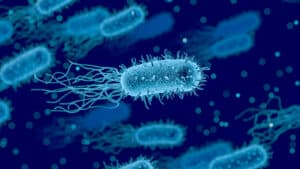
Bacteria vs ECF Air Filters.
Bacteria are single-celled organisms, they are ‘alive’ and can breed without a host. They have negatively charged cell walls (hydrophilic ‘head’) and positively charged flagella / flagellum (hydrophobic ‘tail’). They are more complex than viruses, however the process of the forces (mentioned in previous paragraphs) damaging their structure works in a similar way, if not even more effectively. In the case of bacteria, the damage to them from coming into contact with our ECF filters can actually ‘break down’ their structure and kill them. Bacterial growth is also inhibited.
Regular activated carbon filters can also be effective and removing odours, gases and similar air pollution, but they aren’t very good at filtering bacteria, fine particulate and similar. The reason for this is, that although these types of activated carbon filters have a huge ‘surface area’ to filter air, the structure is too fine. Our E-Carbon Fabric has its’ own superstructure that contains filter ‘loops’ (kind of a ‘micro-mesh’), that works in addition to the even finer structure of the carbon itself. This allows for a better range of effective air filtration; the bacteria, fine particulate and other airborne particles are efficiently adsorbed (stick to the rod-like carbon structures) along with the filtered viruses, odours and gases.
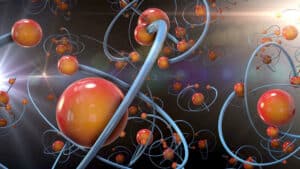
Positive Effect of ECF Air Filters.
Bacteria cell walls are negatively charged and their ‘tails’ are positively charged. Viruses too can have a small negative charge (although proteins may have either charge). Carbon has four electrons in its’ outer shell and can bond equally well with both negatively and positively charged ions / molecules. Usually, the carbon atoms bond with each other, but on the outside of our ECF nano structures there are ‘valence’ electrons waiting to bond. Opposite charges attract, just like the north and south pole on a magnet, so the structure of our ECF filters can act as a magnet to viruses, bacteria and particulates.
Our ECF filters have excellent adsorption qualities; particulates, bacteria etc., stick and adhere to the walls of the E-Carbon Fabric’s nano structure (rather than absorption – ‘sponge like’). Imagine a magnetized fishing net… even things normally small enough to pass through the net would get attracted to and held on the net’s structure.
So are ECF Air Filters the best air purifier for viruses and bacteria?
We believe so. But obviously, we couldn’t guarantee that every virus, bacteria or harmful particle would be filtered out from your environment – that would, at the very least, require a completely sealed environment and for every molecule of air to pass through the filter! But after all the tests that have been run on our E-Carbon Fabric, we believe that our air filters are the best air purifier for viruses and bacteria – and certainly the most effective low cost solution.
- Inexpensive, long-life, low maintenance.
- Easy install on existing air appliances.
- Highly effective air purification: viruses, bacteria, harmful particulate, chemicals, VOCs, pollen, odours, fumes and other airborne pollutants.
- Multiple applications for home, work and other environments.
- Ecologically friendly.
So, we hope you’ll come to the same conclusion.
References and source materials
The Karn Academy:
Intro to viruses
Are viruses dead or alive?
Plantlet:
Bacterial strutcture
WebMD
Surface cleaning and Covid-19
… and to clean your air, install what we think is the best air purifier for viruses and bacteria: our ECF Air Purifying Filters.
Interested in our ECF Air Purifying Filters?

